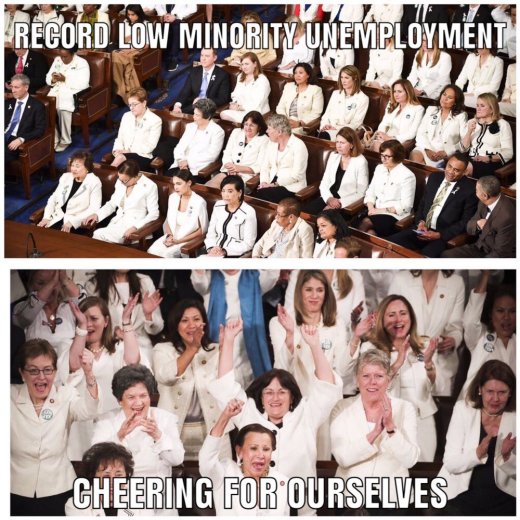As I get older (I will be sixty-three in a week or so) it becomes harder and harder for me to accept the Universe as a “brute fact”: a thing that just is, and that cannot, even in principle, be accounted for. It’s difficult for everyone, of course, not just me, and so people who are strongly committed to atheism and philosophical materialism have worked hard to provide some sort of explanation to set against a belief in God. I used to share that commitment myself — quite militantly so, well into my middle years — and even now I have only gotten as far as a restless and unsatisfied agnosticism.
I should note that the matter of personal belief is a different question from the place of religion in societies and civilizations. I’ve been keenly interested in the history and mechanisms of human flourishing for more than twenty years now, and the more I’ve learned the more I’ve come to understand the central importance of religion. It cannot be cast away; it can only be repressed and masked and perverted, as we see all around us today. (Ten years ago I wrote this post arguing that secularism is, in a Darwinian sense, maladaptive.)
The model that the materialists have devised to answer mankind’s stubborn questions hangs together well enough to dominate most (though hardly all) of the educated West. In brief, it’s this:
1) Where do people come from? How did we get here?
At some point after the Earth cooled, a few billion years ago, self-replicating molecules appeared. (Whether they formed here or arrived after having first formed somewhere else, we don’t know.) Once this process of self-replication began, the mechanism illuminated by Darwin’s great insight began to operate, and the great filter of natural selection began to favor replicators in which accidents of mutation had made them less likely to die, and more likely to make successful copies of themselves. Little by little these replicators became more complex, and differentiated forms found niches of various kinds — and sooner or later began to behave as if they had “interests” of their own. All of this took a very long time, but this gradual, iterative operation eventually resulted in the world we live in. It resulted in us. If it seems impossible to imagine that such a mindless process could ever produce the mind-boggling complexity of life, that’s just because our lives are so short that we simply cannot conceive of the vastness of time it’s taken.
2) We know that there are physical laws and constants that appear to be fine-tuned to support the existence of the world around us. If any one of them were different by even the slightest amount, our Universe would be completely uninhabitable. How can we explain this?
To understand this it’s important to keep in mind what’s called the “Anthropic Principle”. This is the common-sense idea that, since uninhabitable Universes would have no inhabitants, and therefore no observers, we should not be surprised that the Universe we see around us has whatever it takes for us to be able to live in it.
But the question still wants answering, and cosmologists have come up with two related possibilities. The first is that, rather than there being a single Universe, there is in fact an infinite collection of them — a Multiverse — in which every possible assortment of laws and constants is represented, at random, in some universe or other. The Anthropic Principle tells us that we could only be alive to ask these questions in a Universe that has things set up “just so”.
The other idea (which is really just a variation of the first, but differs from it in abstruse cosmological details) assumes a single, infinitely vast Universe, in which all the possible laws and constants are instantiated in different regions. The Anthropic Principle, as above, does the rest.
3) Why is there something rather than nothing?
The reason is that what you call “Nothing” is, according to quantum mechanics, not really empty at all — it is in fact a seething froth of “virtual particles” popping in and out of existence. If you wait long enough, random chance will produce an exceedingly unlikely event of sufficient energy to “bootstrap” a Big Bang, and so a Universe, into existence.
4) What is consciousness? How can it possibly be produced by the human brain, which is, after all, just a blob of ordinary matter?
We’re working on that! We hope to have some answers shortly. We assume, naturally, that the brain must be doing the trick somehow, so it’s just a matter of figuring it out.
How good are these answers? Well, as noted above, they seem satisfactory to a great many people — just as they were good enough for me, for much of my life. (I’ve thought about them a lot, ever since I was a boy.) But they get weaker as you go down the list. Here’s how they seem to me now, a third of the way through my seventh decade:
‣ Answer #1 is the strongest of the lot. The continuity and unity of Earthly life seems clearer and clearer the more we learn, and perhaps the strongest argument for the evolutionary connectedness of the great biological tree is the weaknesses of many living forms, the little hack-jobs and jury-rigs made by repurposing existing parts. Nobody with bad knees, back problems, or appendicitis is going to confront without considerable skepticism the notion of an omnipotent Intelligence who designed every animal from scratch.
That said, it’s hard to look at the astonishing machinery of life — especially the micromachinery, such as the transport protein linked above — and not have the feeling that there has to be something more at work here than the purposeless agitations of atoms and the void. I understand that I cannot begin to grasp what billions of years actually means; in practical terms, for me to try to map my experience of time onto the history of life on Earth it is to confuse the finite with the infinite. Still, though, it’s hard to look at the detail of it all — the incomparable engineering of it all — and not see it as being, somehow, miraculous. This wasn’t a problem for me when I was twelve, or twenty-five, or even forty, but it is, I must confess, becoming rather a problem for me now.
‣ Answer #2 is plausible, but terribly convenient. It posits, on no evidence, that there are unseeable regions of reality in which the laws and constants of Nature are different — but even that isn’t enough: in order to get the statistical part of the argument to work, we must also assume that all possible configurations of the laws and constants are instantiated somewhere in the Multiverse (in order to give the Anthropic Principle the scope it requires). It doesn’t appear, though, that the laws and constants of Nature vary over time; this is, after all, why we call them laws and constants. Why should we believe they vary over space, or between Universes? Indeed, why should we believe in other Universes at all, except as a gimmick to account for the unlikeliness of the world we find ourselves in?
It seems impossible to explain the fine-tuning of the physics of the Universe without having it either being done “by hand”, or by imagining this infinite (and infinitely variegated) Multiverse that we cannot see or touch. Which is the cleaner assumption? In the absence of a third suggestion — and I’ve never heard one — it seems one or the other must be true. But both of these models must be taken on faith. How to choose?
‣ Answer #3 is all the rage these days, and it’s nicely in line with what we’ve learned over the past hundred years or so about the laws of physics. But where do they come from? Isn’t it possible, at least in principle, to imagine a Nothing that is not governed by the rules of quantum mechanics? If it’s possible in principle, why was it inevitable that a Something embodying those rules, which gave rise to Everything Else, should have been the case? Mightn’t nothing, not even the laws of physics, ever have come into being at all?
I have listened, for example, to the physicist Lawrence Krauss trying to convince me that he has an answer to this question of ultimate origins; he’s written a book about it, after all. I have never, though, seen him give a satisfactory answer to the question of where the laws of physics themselves come from. The best he can do, as far as I can see, is to say it might all just be an accident — in other words, a “brute fact” — or to do some more hand-waving about the invisible Metaverse. That’s all fine, I guess, but if that’s all you’ve got, you haven’t really explained as much as you think you have, and you’ve left the biggest question unanswered. It certainly shouldn’t be enough to make you think anyone ought to believe you when you go around saying you’ve refuted the idea of God.
‣ Answer #4 is no answer at all. Consciousness is a mystery, and if someone tells you it isn’t, they’re wrong, or they’re lying, either to themselves or to you. The idea that consciousness is supervenient on the brain does seem reasonable, sort of — after all, we can delete and restore it with anesthesia, and alter its contents with drugs and electrical stimuli — but we don’t have the slightest inkling, in physical terms, of how the trick is done. Simply put, we still have no idea what consciousness is.
The Standard Model, then, leaves a lot to be desired. Nevertheless, skepticism goes both ways. To give just one example (I could give many more):
Finding myself “between two chairs”, and more open to the idea of religious belief (in the personal sense) than I have ever been before, I took up C.S. Lewis’s Mere Christianity the other day, and am about halfway through it. I’ve always liked Lewis’s style — so clean and simple and English — and I looked forward to reading him without the adversarial stance that I had formerly brought to his discussions of, say, our faculty of reason.
But right away there was trouble. Mere Christianity takes as the foundation of its argument our moral sense: Lewis wishes to argue that this Moral Law transcends our instincts, and therefore cannot be of the natural world. Our animal instincts, he notes, point us toward our own gratification: food, sex, sloth, self-preservation, etc. But the Moral Law often acts against these instincts, so it cannot itself be one of them:
Another way of seeing that the Moral Law is not simply one of our instincts is this. If two instincts are in conflict, and there is nothing in a creature’s mind except those two instincts, obviously the stronger of the two must win. But at those moments when we are most conscious of the Moral Law, it usually seems to be telling us to side with the weaker of the two impulses. You probably want to be safe much more than you want to help the man who is drowning: but the Moral Law tells you to help him all the same.
The obvious objection to this argument is that if the Moral Law is itself an instinct — an evolutionary adaptation to regulate the behavior of social animals — then Lewis’s example collapses to this:
If two instincts are in conflict, and there is nothing in a creature’s mind except those two instincts, obviously the stronger of the two must win… You probably want to be safe much more than you want to help the man who is drowning: but the social instinct is stronger, and tells you to help him all the same.
Lewis’s book is wise and insightful, but for a “seeker” whose commitment to non-theistic scientific materialism is falling away, his choosing such a weak argument to be the foundation of a Christian manifesto rather spoils the rest of the book.
Where, then, does all of this leave me? It seems there is no process of pure reason that will settle these ultimate questions, and so I must either believe nothing, or rely on faith. To believe nothing, though, is a good deal harder than it sounds: it’s easy, perhaps, when one is young and can defer the question while focusing on practical matters, but as one’s shadow lengthens, and the distractions of youth and middle age fall away, the great mysteries come increasingly to the fore. I would like very much, in the time I have left, to be able to believe something. But if pure Reason cannot tell me what to believe (and it is Reason itself that has convinced me it can’t), and so belief must be built upon Faith, then where should Faith be placed? Such are my stubborn habits of mind that I am still, in some way, hoping that Reason will help me adjudicate between the competing prospects. But I’m starting to see that this isn’t really how it works — the harder I try, the more I see the limits of Reason.
What am I to do?


